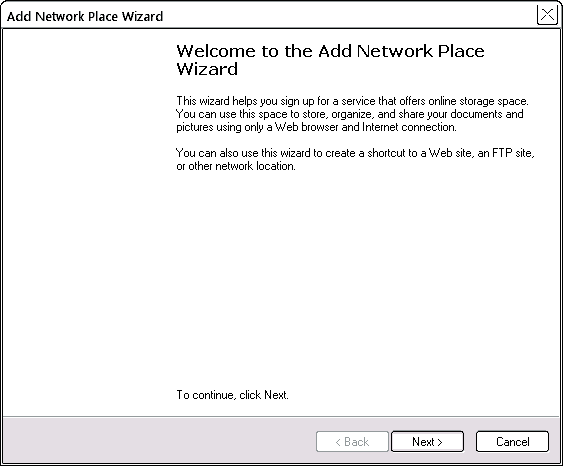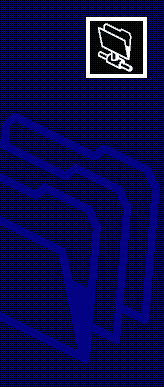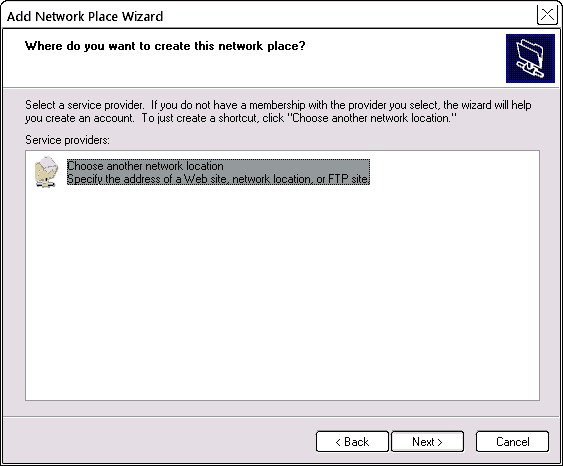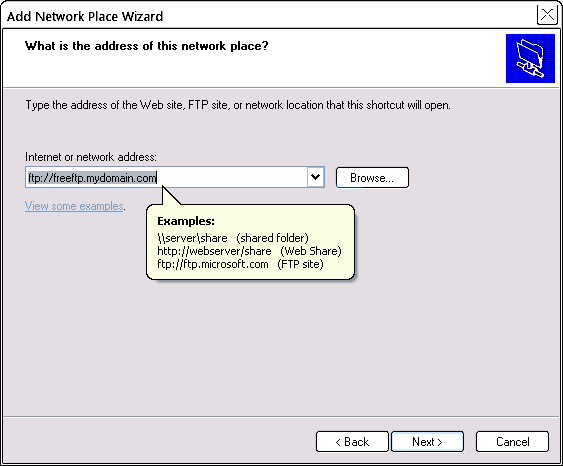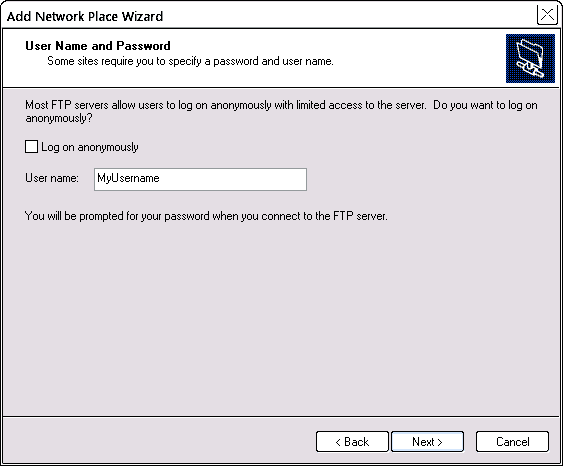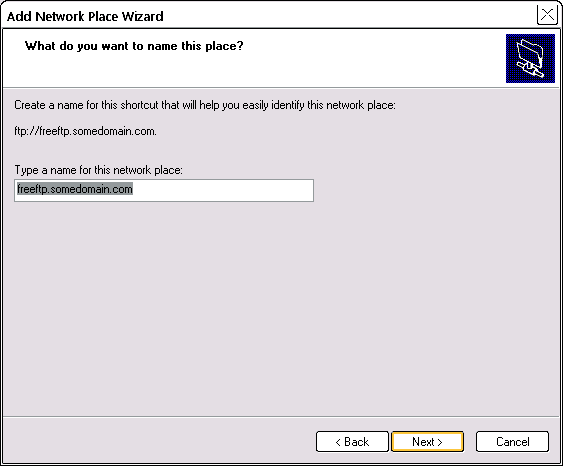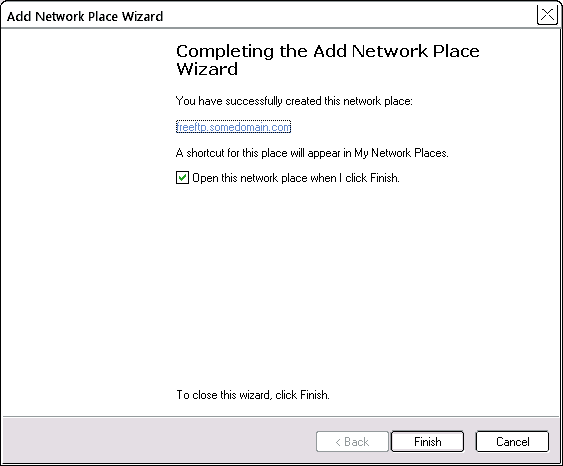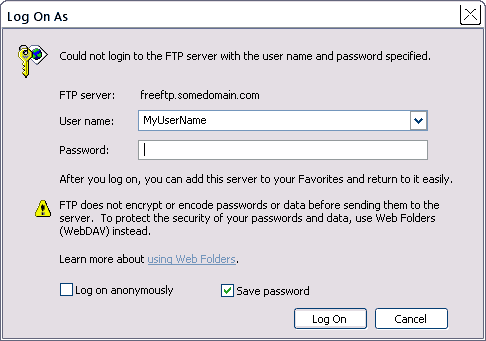



Setting up Windows FTP
Windows and has a built in FTP (File Transfer Protocol) capability which means that it can copy files to and from your site, in the same manner as you copy them between folders in Windows Explorer. In this tutorial we cover:
Why separate FTP?
Setting up Windows FTP
Add Network Place wizard
Logging on to your site
Why separate FTP?
Reasons why you might use it over the SiteSpinner FTP, is that sometimes the SiteSpinner one does not work or is blocked by something on your computer.
Or you may want to control the exact files that are uploaded. While you can upload single pages with SiteSpinner, it uploads everything for that page, including files that have not changed. A separate FTP allows you to upload, from your local publish folder, only those files you know have changed.
Once you have that FTP connection, you can treat the FTP folder (your website) as any other Windows Explorer folder -- create sub-folders and drag and drop files into them. Or copy and paste. These operations constitute the "upload" -- it is however a lot slower than your normal Windows Explorer copy operations.
Setting up Windows FTP
To set up the FTP connection the first time, follow the steps below.
First make sure you have these three essential pieces of information, provided by your host:
- Host name
- Your logon name
- Your password

Next, click the Windows Start button
In your program menu, Open My Network Places
In the Network Tasks pane, click "Add a Network Place"
The "Add Network Place" wizard will now open. Read what it says, (above) then click "Next".
After you click "Next", Windows will go check the Internet for something best known to itself -- but after a few seconds or minutes (depending on your system) it will return with a window like the one just above. You want to specify the address of a web or FTP site so again, click the "Next" button.
Now windows will return with a screen like this, waiting for you to enter your host name (Internet address). These names can vary quite widely, and we have set the image to show some of the styles of possible host names.
You host will have given you a host name -- for the purposes of this example ours is:
ftp://freeftp.mydomain.com. Yours will of course be different.
Having entered your host name, and double-checked that you have it exactly right, click "Next" again.
You will now get a window asking for your username. We suggest you uncheck the "Log on anonymously" checkbox -- this is of little use when changing files on your website.
Then enter your logon name -- this will be another piece of information your host will have provided -- again enter it exactly as they gave. For the illustration we show the username as "MyUsername" -- yours will be different. Double check that you have it exactly right, then click "Next" again.
For the next step, you can give your network place whatever name you like -- it is only for your ease of reference. You may be happy with the default offered -- ours is freeftp.somedomain.com. If not, just overtype with a meaningful name, and in either case, click "Next" again.
You're done -- almost. Normally you will click the "Finish Button" and you will open your site -- your new network place.
The first time you open your site, Windows will ask for your password. If you leave the "Save Password" box checked as shown, Windows will automatically send your saved password for future logons -- there will be no need to re-key it. But you will need to key it this first time!
If you are concerned about the physical security of your computer, uncheck the "Save Password" box, and Windows will require the password each time you log on.
In future, to get to your site, navigate there by Start > My Network Places, and the icon representing your website should be in the My Network Places folder. Or you could place a shortcut to it on your desktop.








